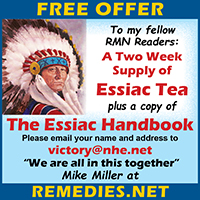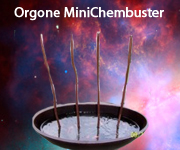From CGI's HotCoffee:
CGI is RMN's readers forum where HotCoffee is a member. Come join the fun!
-----------------
Patents on kratom alkaloids prove the federal government is lying to us.
Published on September 3, 2016 in Cannabis/Freshest News/Human Rights by Meko Haze
Pharmaceutical company Smith Kline & French Laboratories obtained a patent for a main alkaloid in kratom in 1964.
Patent 3,324,111 is for the alkaloid in kratom known as Speciofoline.
A 2010 patent application claims kratom can be used to treat opioid addiction.
Americans are using 80% of the worlds total opioid supply.
The federal government is in the middle of making an irrational move to do an emergency placement of kratom in the Schedule I drug category. The DEA claims that kratom is an “imminent hazard to public safety.” However, patents on kratom alkaloids prove the federal government is lying to us.
The DEA has claimed that kratom does not have any known medicinal qualities. Apparently, the DEA and the FDA were not aware of United States Patent 3,324,111.
Speciofoline has useful pharmacodynamic activity.
One of the main alkaloids found in Mitragyna Speciosa, otherwise known as kratom, is Speciofoline. It just so happens that a patent was filed for Speciofoline on August 10, 1964. The patent claims the “alkaloid has useful pharmacodynamic activity, particularly analgetic and antitussive activity.”
Pharmacodynamics studies the biochemical and physiologic effects of drugs, mainly pharmaceutical drugs. So pharmacodynamics will conduct studies to examine what effects a drug will have by focusing on the effects of what level dose gives what response.
An analgesic is any painkiller that is used to achieve analgesia. So by stating that Speciofoline shows useful analgetic activity, it means it works in relieving pain.
Antitussives are drugs that are used to suppress coughing. The effect typically occurs by the antitussive drug administered reducing the activity in the cough center of the brain. Antitussive drugs are used to relieve dry coughs.
A look at Arnold Beckett.
So who would want the patent for Speciofoline when the DEA claims kratom to be such a danger to the American people? None other than a pharmaceutical company by the name of Smith Kline & French Laboratories. Smith Kline & French Laboratories was assigned the patent by Arnold Heyworth Beckett.
Beckett was born in Lancashire, England on February 12, 1920. He studied at the School of Pharmacy and Birkbeck College, both part of the University of London where he obtained his Bachelor of Science degree in 1947, and his Doctor of Philosophy in 1950.
In the 1970s and 19080s, Beckett aided in investigations when steroid use was banned from specific competitions. Beckett was involved in several high-profile investigations, including Canadian sprinter Ben Johnson.
Johnson was ultimately stripped of his gold medal after he tested positive for performance-enhancing drugs in 1988.
In 1992 Beckett resigned from the medical commission following controversial rulings following the Barcelona Olympics. From that point, Beckett switched sides and became an advocate for athletes accused of using steroids.
The rise of one of the largest pharmaceutical companies in the world.
In 1830, John K. Smith opened a drugstore in Philadelphia. His younger brother George became a part of the company in 1841 and formed John K Smith & Co.
Mahlon Kline joined the brothers in 1865, originally as a bookkeeper. By 1875, Kline had begun handling sales and bringing in rather large accountants. As a reward for his Kline’s work, the company was renamed as Smith, Kline, and Company.
In 1844 Clayton French and William Richards founded French, Richards, and Company. In 1891, Smith, Kline, and Company acquired French, Richards, and Company, creating Smith Kline and French Laboratories.
Smith Kline and French Laboratories put their focus on research to be able to sustain business better. In 1968, just 4-years after obtaining the patent for Speciofoline, the company acquired Recherche et Industrie Thérapeutiques out of Belguim, and changed their name to SmithKline-RIT.
In 1982, SmithKline was able to acquire Allergan, an eye and skin care business. SmithKline then merged with Beckman Instruments, Inc. The company specialized in diagnostic and measurement instruments. The merge created SmithKline Beckman.
SmithKline Beckman was not done yet. In 1989 the company merged with The Beecham Group plc. The merger gave birth to SmithKline Beecham plc, which then merged with Glaxo Wellcome, finally creating GlaxoSmithKline plc. As of 2015, GlaxoSmithKline was the sixth largest pharmaceutical company in the world.
That means one of the largest pharmaceutical companies in the world currently holds the patent showing that an alkaloid in kratom has “useful pharmacodynamic activity, particularly analgetic and antitussive activity.”
Patent application with the governments blessing states kratom can help with opioid addiction.
Aside from a patent on Speciofoline, US 20100209542 A1 is an application that was entered for University Of Massachusetts Medical School, University Of Mississippi in 2010. The application recognizes kratom as a treatment for opioid withdrawal. US 20100209542 A1 goes on to claim that kratom could be used to help withdrawals from other drugs as well.
The application includes the Statement of Governmental Support, which was awarded by the National Institutes of Health, the National Institute For Drug Abuse, and National Center for Research Resources.
This invention is related to the field of drug addiction and substance abuse. In particular, the invention utilizes compounds that facilitate reversal of drug addiction by avoiding the expression of a withdrawal syndrome. For example, natural compounds may be produced from the Kratom (Mitragyna speciosa Korth) leaf. Compounds isolated from Kratom leaf extracts may be capable of allowing a patient to cease the administration of addictive compounds without experiencing physically debilitating withdrawal symptoms.
Could kratom help break opioids hold on Americans?
The 2010 patent application clearly states that kratom is believed to help with opioid addictions. America is in the middle of the largest opioid epidemic the country has ever seen. While people are dying in the streets, pharmaceutical companies are making a fortune.
CNBC did an article in April of this year that claimed Americans are consuming 80% of the global opioid supply. In 2015, over 300 million opioid prescriptions were given to Americans, which roughly equals a $24 billion market. A product such as kratom has the potential to harm a very profitable industry.
Who is the DEA protecting, the people or Big Pharma?
So why would the federal government say something is not good for us when there are so many pieces of evidence saying different? All the evidence points to one thing. Protecting the profits of Big Pharma. This should not caome as a huge surprise after the DEA’s recent decision to keep cannabis listed as a Schedule I drug.
Recently the DEA was called out for the existence of US Patent 6,630,507. The patent goes into detail about the antioxidant and neuroprotective properties found in cannabis. Patent 6,630,507 shows that the government is acutely aware of the medical benefits cannabis possesses, even though recently the DEA claims the opposite.
Time and time again we see that our federal government has repeatedly ignored what is best for the people to push another agenda. Most of the time that agenda is in place for someone to generate revenue.
The pending placement of kratom as a Schedule I is just one more way the federal government is overstepping their boundaries. While kratom is ripped away from patients, pharmaceutical companies gleefully taunt those who wish to escape the clutches of their drugs that are forced upon so many. Placing kratom in the Schedule I drug category is nothing more than a tyrannical abuse of power that will only turn people looking for natural medical alternatives into common criminals.
Share this:
http://thedailyhaze.com/patent-kratom-alkaloids-government-lying/






































